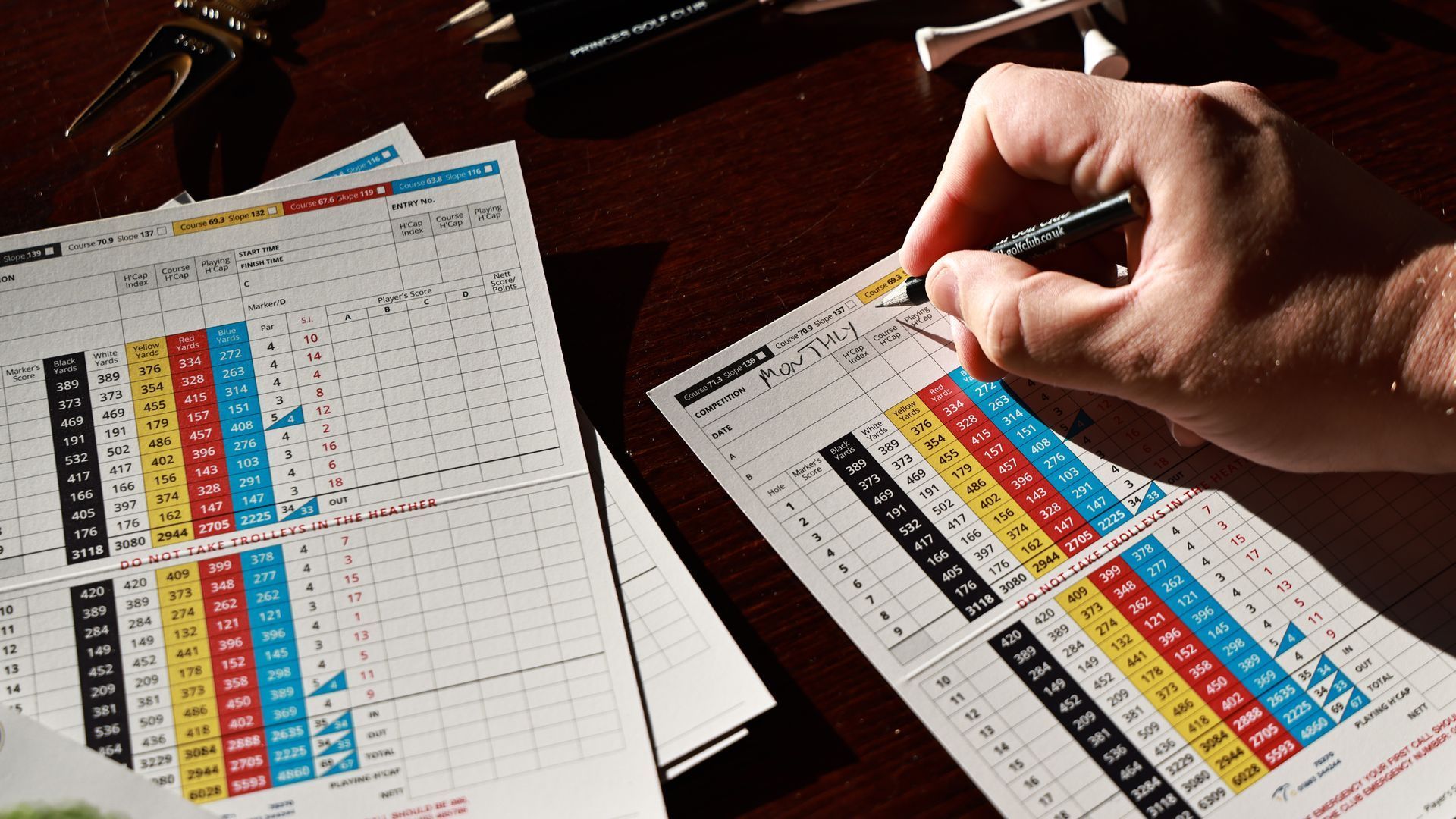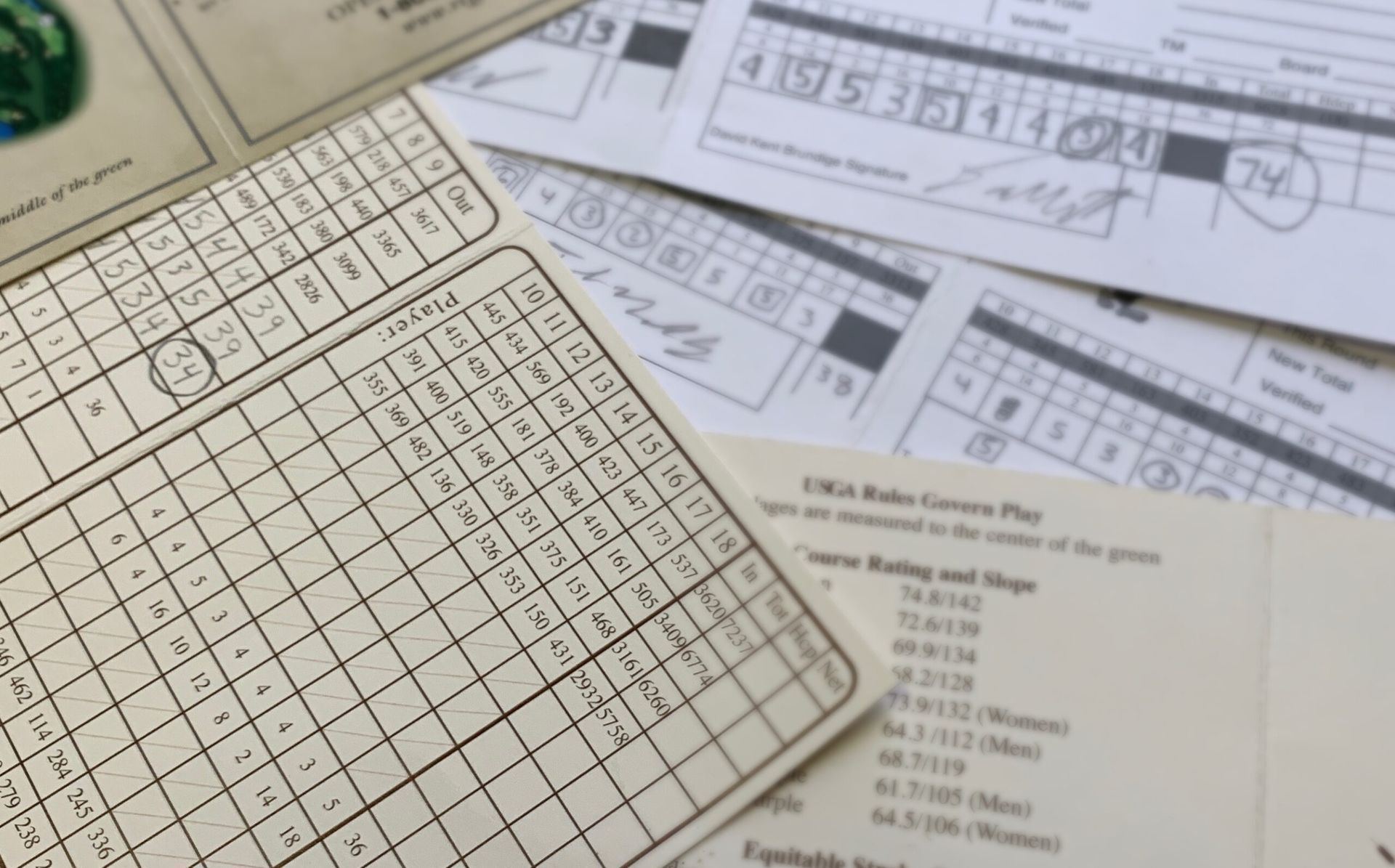April 24, 2025
A Deep Dive into Golf Handicaps: What It Really Means and Why It Matters

From Weekend Warriors to Club Champs—How Handicaps Shape the Game

Understanding the Origins and Philosophy
The concept of a golf handicap has been part of the sport’s tradition for more than a century, born from the simple idea that golfers of varying skill levels should be able to play together in a fair and competitive manner. Before official systems were developed, informal methods of evening the playing field existed. Players would agree to start with adjusted scores or provide strokes to one another based on ability. Over time, the need for a consistent and fair method of determining these allowances became apparent, particularly as organized competitions grew in popularity.
The earliest known instance of a handicap system dates back to the late 17th century in Scotland, the birthplace of golf. As the sport spread, so did the desire for a uniform and accepted standard. In the United States, the United States Golf Association (USGA) began working on a formal handicap system in the early 20th century. Their aim was not merely to facilitate fair play but also to encourage participation. A handicap system allowed a high-handicap golfer, such as a newcomer or recreational player, to compete against a seasoned low-handicap golfer on more equal footing.
At its core, the handicap system is about equity and inclusion. It’s not just a number on a scorecard or a label for a player's ability; it’s a way of acknowledging the inherent variability in skill and enabling diverse players to share the course competitively. This democratizing philosophy has made golf unique in its embrace of both individual performance and collective enjoyment.
What a Handicap Really Represents
Many new golfers initially assume that a handicap reflects their average score, but this is a common misconception. A handicap is not your average score—rather, it’s a representation of your potential. Specifically, it estimates the score a golfer is capable of shooting on a good day, when everything aligns: the swing feels effortless, the putts drop, and the mental game is sharp.
This is a fundamental distinction, and it’s what makes the handicap system so interesting and valuable. It rewards improvement and consistency. It encourages golfers to track progress over time and to understand their own game with a more analytical eye. A golfer who shoots 100 on most days might have a handicap that suggests they are capable of shooting 90—or even better—because that number is built upon their best recent performances.
The handicap also reflects course difficulty. This is another critical component often overlooked by casual players. A golfer’s handicap adjusts depending on where they are playing. This adjustment is made through the use of Course Rating and Slope Rating, which are assigned to every rated golf course by authorized governing bodies. The Course Rating estimates the score a scratch golfer (handicap of 0) would be expected to shoot, while the Slope Rating measures how much harder the course is for a bogey golfer (handicap around 20 for men, 24 for women).
How the Modern Handicap System Works
The system used to determine a golfer’s handicap has evolved significantly over the decades. In 2020, a global initiative was launched to standardize the various national systems into a single, unified method: the World Handicap System (WHS). Spearheaded by the USGA and The R&A, and adopted by golf associations worldwide, WHS brought consistency and clarity to how handicaps are calculated and applied.
The World Handicap System uses a calculation based on the best 8 scores out of a golfer’s last 20 rounds. These scores are adjusted for the difficulty of the course played using the Course Rating and Slope Rating. The goal is to create a number that accurately reflects a golfer’s potential playing ability.
Let’s take an example. Suppose a golfer has played 20 rounds, and their best 8 adjusted differentials (a number calculated from the score, Course Rating, and Slope Rating) average to 15.4. That becomes their Handicap Index. This number is portable—it can be used anywhere in the world, on any rated course. When playing a new course, this index is converted into a Course Handicap using the Slope Rating and other factors, which tells the golfer how many strokes they are allowed for that round.
One of the key innovations of WHS is daily revision. Because scores can now be entered and updated digitally, a golfer’s handicap can change in real time based on their most recent scores. This dynamic model keeps the system fresh, responsive, and aligned with a golfer’s current form.

The Psychological Dimensions of a Handicap
To the casual observer, a handicap might appear to be nothing more than a competitive tool, but to seasoned golfers, it carries deep psychological weight. A player’s handicap becomes a point of pride, a motivator, a benchmark, and sometimes even a burden. For those striving to improve, the journey of lowering one’s handicap is intensely personal. It’s not unlike chasing a personal best in running or lifting a heavier weight at the gym. The number represents months—or years—of effort, struggle, experimentation, and learning. Seeing that number drop is gratifying in a way few non-golfers can appreciate.
Conversely, some golfers become overly attached to their handicap, to the point that it hinders enjoyment. Fear of increasing the number might lead to avoidance of posting poor scores, or even manipulating outcomes. The governing bodies have put rules in place to discourage such behavior, but ultimately, the integrity of the system depends on the integrity of the player.
Interestingly, a handicap can also influence strategy. A golfer playing with a high handicap may be more aggressive, taking risks knowing they have strokes to use. A low-handicap golfer, especially in a competitive match, may need to play more conservatively. The psychological game is always unfolding alongside the physical one, and the handicap is often at the heart of that dynamic.
How It Impacts Competition
In casual play, a handicap allows friends of differing abilities to play together and enjoy a meaningful match. Without the handicap system, golf would often become frustrating for newcomers and tedious for experts when playing in mixed-ability groups. With handicaps, the playing field is leveled, and every stroke matters.
In more formal settings, handicaps are essential for tournament play. Many clubs and amateur associations run net score events, where the handicap is subtracted from the gross score to determine the net score. This means that a 15-handicap player who shoots 88 has a net score of 73—possibly beating a 5-handicap player who shot 77.
There are also formats such as match play, where strokes are allocated on the most difficult holes based on the difference in handicaps between players. These formats not only keep competitions engaging but also reinforce camaraderie. Knowing that everyone has a chance to win brings players back week after week.
Professional golf does not use handicaps in competition, but pros often carry an unofficial index for practice and friendly games. Their understanding of the system helps them connect with fans and amateurs alike. Some professionals participate in pro-ams, where handicaps play a central role in the team scoring.
Technology and the Future of Handicapping
Technology has revolutionized the way handicaps are tracked, maintained, and used. Today, golfers can log into mobile apps, post scores, view trends, and even calculate match play handicaps with just a few taps. Integration with GPS systems allows automatic tracking of holes, strokes, and putts, offering a data-rich analysis of each round. This data feeds into the handicap system, making it more accurate than ever.
Artificial intelligence and machine learning are also finding their way into the game. Future systems may include advanced metrics such as strokes gained, short-game efficiency, and course strategy to provide an even more nuanced handicap. With wearable devices, every swing and putt could contribute to a real-time performance model that helps golfers train smarter and play better.
There is even discussion about how environmental factors could influence handicaps. A particularly windy day, or playing in extreme heat, could someday be considered in the handicap differential. While this may seem far-fetched, the direction of innovation in golf suggests that no aspect of play will remain untouched by technology for long.
More Than a Number
In the end, a golf handicap is more than just a number—it’s a reflection of dedication, honesty, and a love for the game. It’s a tool that enables fairness, promotes inclusivity, and celebrates improvement. Whether you’re a 30-handicap beginner learning the basics or a scratch golfer competing in club championships, your handicap tells a story that is uniquely yours.
This is perhaps the most beautiful aspect of the handicap system: it humanizes golf. It acknowledges our limitations while rewarding our efforts. It connects strangers, challenges friends, and motivates us to keep showing up—even when the putts don’t fall and the drives fade right. Because every round is a step in the journey, and the handicap is the narrative thread that ties it all together.
More from Fairway Control












